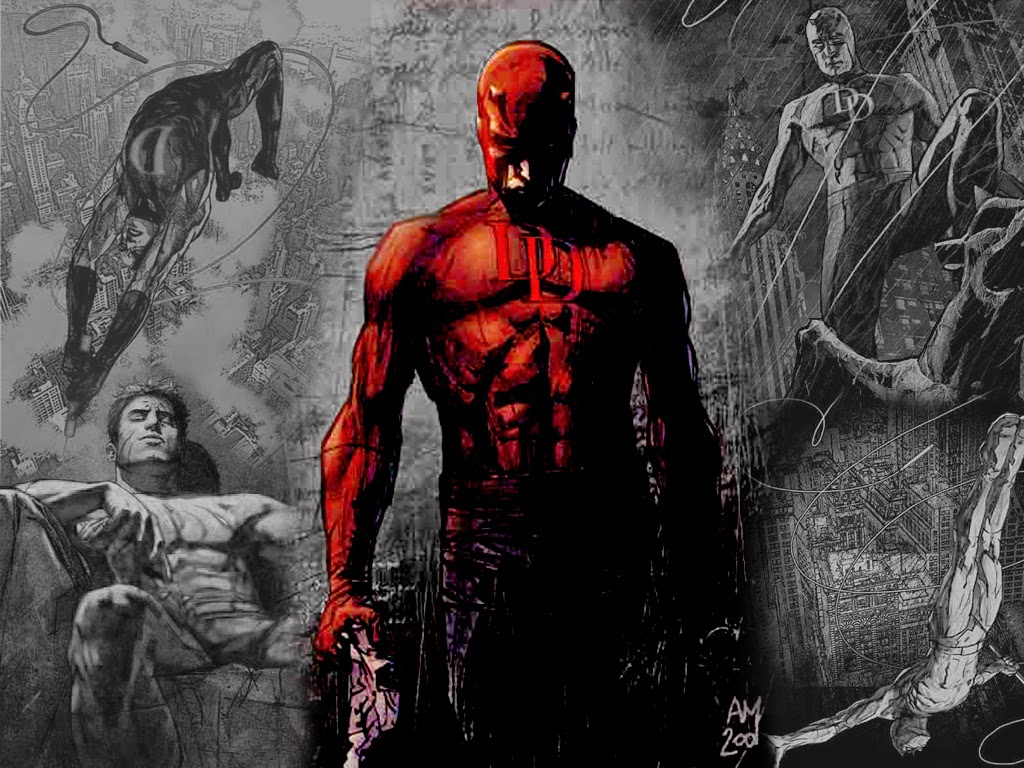Daredevil
Cast
Matt
Murdoch/ Daredevil: Charlie Cox
Wilson
Fisk: Vincent D’Onofrio
Foggy
Nelson: Elden Henson
Karen
Page: Deborah Ann Woll
Claire
Temple: Rosario Dawson
Ben
Urich: Vondie Curtis-Hall
Vanessa (Fisk): Ayelet Zurer
It seems ridiculous
now, but before Netflix debuted Marvel’s Daredevil, nobody could overlook the
bad taste Ben Affleck’s turn as the crimson-colored crusader had left in our
collective mouth. Many fans of the comic, myself included, wondered if Marvel
had it in them to up the ante and bring the darkness of the comics to the small
screen. Even when the previews started pouring in, that silly black mask wasn’t
convincing that the show would overcome Marvel’s ability to create a bad TV
show.
Friday, April 10th
came, and I settled into my chair to binge-watch the thirteen episode season of
a show I wasn’t sold on. Ten minutes after hitting play, it became clear that
Daredevil was no longer going to be a whispered joke among hardcore comic fans.
From dark (read: black) fight scenes to decidedly un-angelic characters, this
wasn’t a Disney princess parade. This was Hell’s Kitchen, where nobody comes
out clean and life is never shining.
 Let me back up just
a little bit here. I read Daredevil in the 90’s (yes, that magical place that
old people come from), when Joe Quesada introduced a comic that had more shadow
in it than color. I wondered then exactly how much ink he used to fill those
pages in each issue. On top of that, the covers were beautiful, more art than
comic, and really sold the devil-vs-angel aspect of our titular character. What
I wanted out of this show was what I loved in those comics: dark, gritty
stories backed up by dark, gritty visuals.
Let me back up just
a little bit here. I read Daredevil in the 90’s (yes, that magical place that
old people come from), when Joe Quesada introduced a comic that had more shadow
in it than color. I wondered then exactly how much ink he used to fill those
pages in each issue. On top of that, the covers were beautiful, more art than
comic, and really sold the devil-vs-angel aspect of our titular character. What
I wanted out of this show was what I loved in those comics: dark, gritty
stories backed up by dark, gritty visuals.
Marvel gave me
exactly what I was looking for. Entranced far after my fiancé had decided the
screen was too dark for her to enjoy; I spent thirteen hours glued to my chair,
soaking in the refreshing grittiness, watching the glass hearts of hero and
villain shatter and glue back together again.
And why was it just so good? Because the show takes it’s time, running the plot threads in circles before closing up each wound. Every stitch is visible, but you have to be willing to watch the needle push through the skin and into the meat before you can breathe a sigh of relief. Despite the TV-MA rating, Daredevil doesn’t push blood and gore into every scene, which is why each time some shows up, it punches you in the gut. It matters. There is always a solid, story-driven reason they push into violent territory.
Everyone has already
talked about the amazing fight scenes, and all I have to add really is that I
think it’s amazing that, for the first half of the series, Matt Murdoch’s
fighting style mimics boxing more than martial arts, and after a “meeting” with
his mentor, Sticks, he seems to change into a more fluid fighter. That he takes
bone-crunching beatings just like his dad did in the ring…well…the saying like-father-like-son
has possibly never been clearer.
In short, if you're
on the fence about this new version of Daredevil, swing off and join the rest
of us, right here in the shadows of Hell’s Kitchen. Or at least, on Netflix.
James Neal works on his own webcomic, Mandy and Murder-Bear. Also, his fantasy novel, Of Blood and Blade is available now on Amazon.
James Neal works on his own webcomic, Mandy and Murder-Bear. Also, his fantasy novel, Of Blood and Blade is available now on Amazon.












